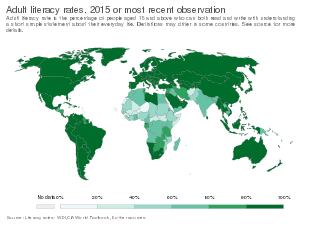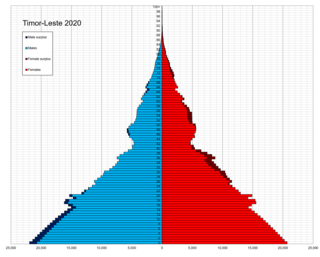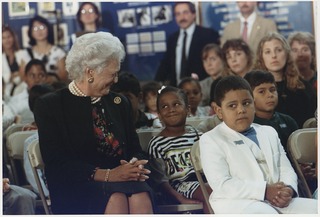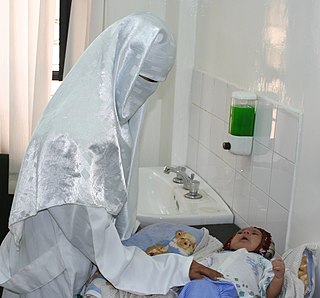
Literacy is the ability to read and write. Broadly, literacy may be viewed as "particular ways of thinking about and doing reading and writing" with the purpose of understanding or expressing thoughts or ideas in written form in some specific context of use. In other words, humans in literate societies have sets of practices for producing and consuming writing, and they also have beliefs about these practices. Reading, in this view, is always reading something for some purpose; writing is always writing something for someone for some purpose. Beliefs about reading and writing and their value for society and for the individual always influence the ways literacy is taught, learned, and practiced.

The Arab world, formally the Arab homeland, also known as the Arab nation, the Arabsphere, or the Arab states, comprises a large group of countries, mainly located in Western Asia and Northern Africa. While the majority of people in the Arab world are ethnically Arab, there are also significant populations of other ethnic groups such as Berbers, Kurds, Somalis and Nubians, among other groups. Arabic is used as the lingua franca throughout the Arab world.

This is a demography of the population of East Timor including population density, ethnicity, education level, health of the populace, economic status, religious affiliations and other aspects of the population.

Adult education, distinct from child education, is a practice in which adults engage in systematic and sustained self-educating activities in order to gain new forms of knowledge, skills, attitudes, or values. It can mean any form of learning adults engage in beyond traditional schooling, encompassing basic literacy to personal fulfillment as a lifelong learner, and to ensure the fulfillment of an individual.
Functional illiteracy consists of reading and writing skills that are inadequate "to manage daily living and employment tasks that require reading skills beyond a basic level". Those who read and write only in a language other than the predominant language of their environs may also be considered functionally illiterate. Functional illiteracy is contrasted with illiteracy in the strict sense, meaning the inability to read or write complete, correctly spelled sentences in any language.
The history of education in Africa can be roughly divided into pre- and post- colonial periods. Since the introduction of formal education to Africa by European colonists, African education, particularly in West and Central Africa, is characterised by both traditional African teachings and European-style schooling systems. The state of education reflects not only the effects of colonialism, but instability resulting from and exacerbated by armed conflicts in many regions of Africa as well as fallout from humanitarian crises such as famine, lack of drinking water, and outbreaks of diseases such as malaria and Ebola, among others. Although the quality of education and the quantity of well-equipped schools and teachers has steadily increased since the onset of the colonial period, there are still numerous inequalities evident in the existing educational systems based on region, economic status, and gender.

Literacy in India is a key for social-economic progress. The 2011 census, indicated a 2001–2011 literacy growth of 97.2%, which is slower than the growth seen during the previous decade. An old analytical 1990 study estimated that it would take until 2060 for India to achieve universal literacy at then-current rate of progress.

Education in Mali is considered a fundamental right of Malians. For most of Mali's history, the government split primary education into two cycles which allowed Malian students to take examinations to gain admission to secondary, tertiary, or higher education. Mali has recently seen large increases in school enrollment due to educational reforms.

Literacy in the United States was categorized by the National Center for Education Statistics into different literacy levels, with 92% of American adults having at least "Level 1" literacy in 2014. Nationally, over 20% of adult Americans have a literacy proficiency at or below Level 1. Adults in this range have difficulty using or understanding print materials. Those on the higher end of this category can perform simple tasks based on the information they read, but adults below Level 1 may only understand very basic vocabulary or be functionally illiterate. According to a 2020 report by Gallup based on data from the U.S. Department of Education, 54% of adults in the United States lack English literacy proficiency.

Released by UNESCO, the Gender Parity Index (GPI) is a socioeconomic index usually designed to measure the relative access to education of males and females. It is used by international organizations, particularly in measuring the progress of developing countries. For example, some UNESCO documents consider gender parity in literacy.

Women in Yemen have historically been placed at a disadvantage due to their gender, with a highly patriarchal society. Although the government of Yemen has made efforts that will improve the rights of women in Yemen, many cultural and religious norms, along with poor enforcement of this legislation from the Yemeni government, have prevented Yemeni women from having equal rights to men.

Females in Nigeria have a basic human right to be educated, and this right has been recognized since the year 1948 adoption of the Universal Declaration on Human Rights (UDHR) According to a report in 2014, female education has an important impact on the development of a stable, prosperous and healthy nation state resulting in active, productive and empowered citizens. Educating girls develop growth rates, encourages independence of the girl child and reduces social disparities. In 2009, the Nigerian Population Council (NPC) observed that women with higher educational qualifications are more likely to be in formal wage employment than those at the level of primary school education.
Educational inequalities in South Sudan can be attributed to a number of factors. The lack of funds and infrastructure, along with a poor and mostly illiterate population makes establishing an effective education system challenging. There are also certain traditional cultural ideas about women which make it more difficult for girls to get an education than their male counterparts.

The culture, evolution, and history of women who were born in, live in, and are from the continent of Africa reflect the evolution and history of the African continent itself.
The socioeconomic impact of female education constitutes a significant area of research within international development. Increases in the amount of female education in regions tends to correlate with high levels of development. Some of the effects are related to economic development. Women's education increases the income of women and leads to growth in GDP. Other effects are related to social development. Educating girls leads to a number of social benefits, including many related to women's empowerment.
Traditional gender roles in Egypt are prevalent and clearly defined. These roles are largely associated with traditional Islamic family structures, wherein women's roles are closely tied to the domestic sphere and men's roles tied to the public sphere. Gender roles are based on assumed biological differences between the sexes and can lead to dramatically different life experiences as well as opportunities and outcomes for individuals. Consequently, when looking at a number of indicators, women often find themselves disadvantaged relative to men.
The demographics of the Middle East and North Africa (MENA) region show a highly populated, culturally diverse region spanning three continents. As of 2022, the population was around 493 million. The class, cultural, ethnic, governmental, linguistic and religious make-up of the region is highly variable.

Sustainable Development Goal 4 is about quality education and is among the 17 Sustainable Development Goals established by the United Nations in September 2015. The full title of SDG 4 is "Ensure inclusive and equitable quality education and promote lifelong learning opportunities for all".
Gender parity is a statistical measure used to describe ratios between men and women, or boys and girls, in a given population. Gender parity may refer to the proportionate representation of men and women in a given group, also referred to as sex ratio, or it may mean the ratio between any quantifiable indicator among men against the same indicator among women.












